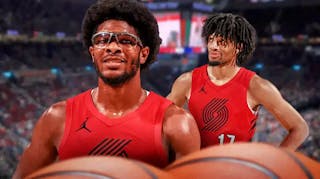The Portland Trail Blazers had seen their promising All-Star backcourt of Damian Lillard and C.J. McCollum fall short in two consecutive postseasons, despite both players proving to be a spectacular one-two punch.
Starting a new season and in the midst of contention, coach Terry Stotts tasked his staff with diagnosing what had plagued this team and what could help it take the next step.
“You don't want to just say, ‘Oh, we are not making shots,'” Stotts said, according to ESPN's Zach Lowe. “You can't give into that. You want to feel like you can make changes.”
“Are certain passes not being made? Are teams guarding us differently?” Or worst of all: “Are we growing stale?”
Having analyzed the data, the team would have to make a transition between being a good, but opportunist 3-point shooting team, to being one that seeks them more aggressively, allowing the best shooters to cash in on their looks from long-range.
“We shoot 3s well,” Stotts told them. “But we don't take enough. Let's take more.” C.J. McCollum smiled and nodded at the thought of a greener light. “Oh, I have no problem with that,” he recalls thinking. He glanced around to see if teammates had the same reaction. Stotts must have sensed the glee. “Good 3s, guys,” he said. “Take more good 3s.”
Since then, Portland has gone from taking 27.5 percent of their shots from deep to 33 percent — the 10th-highest in the league. Most of them are coming from catch-and-shoot opportunities, according to NBA.com.
The Blazers have now effectively traded five or six mid-range two-pointers per game for five or six 3-pointers, making the jump to the modern era of NBA basketball along with the other teams that have found recent success.




